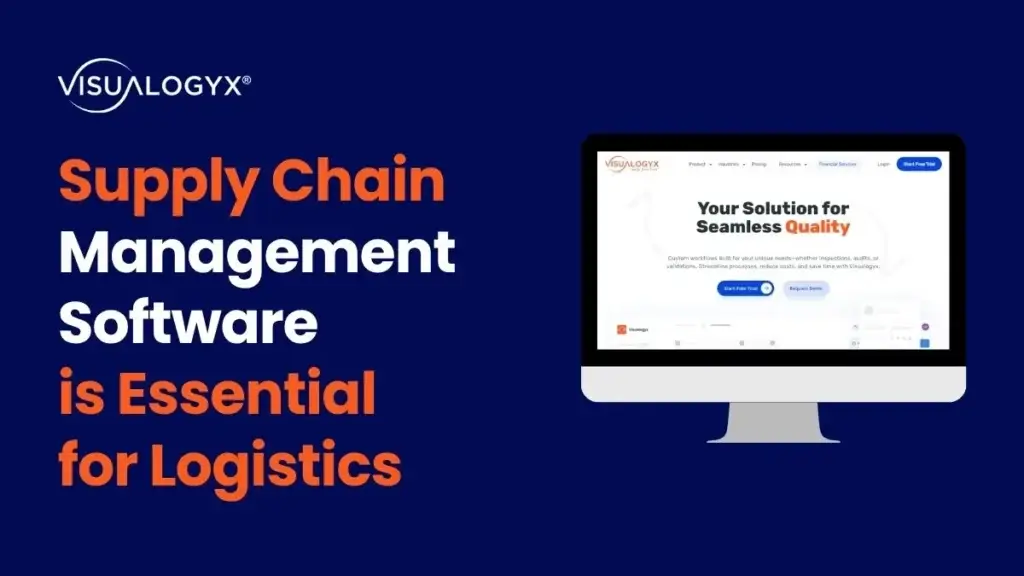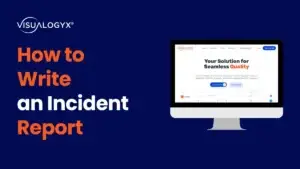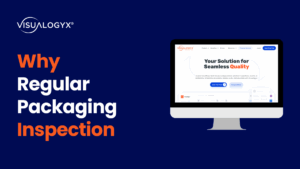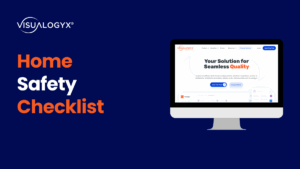The Digital Transformation of Financial Audits
In today’s fast-paced financial landscape, traditional paper-based audit processes are quickly becoming obsolete. Financial institutions face mounting pressure to enhance accuracy, improve compliance, and reduce operational costs while maintaining the highest standards of data integrity. Digital audit software has emerged as the solution to these challenges, offering a comprehensive approach to modernizing financial inspection workflows.
According to a 2023 Deloitte survey, 78% of financial institutions have accelerated their digital transformation initiatives in audit and compliance functions since 2020, with improved accuracy and reduced operational costs cited as primary drivers.
Financial audits are critical for ensuring regulatory compliance, validating asset values, and mitigating risks. However, the traditional methods of conducting these audits are fraught with inefficiencies, from manual data entry errors to delayed reporting and limited visibility. This is where digital inspection and audit management software like Visualogyx is changing the game.
Why Financial Institutions Are Embracing Digital Audit Solutions
The shift toward digital audit solutions isn’t just about keeping up with technology trends—it’s about addressing fundamental challenges in the financial services sector:
Enhanced Accuracy and Reduced Human Error
Manual data entry and paper-based processes are inherently prone to errors. A single misplaced decimal point can have significant consequences in financial auditing. Digital audit platforms minimize these risks through:
- Automated data validation rules that flag inconsistencies in real-time
- Standardized templates that ensure all required information is captured
- Digital workflows that eliminate transcription errors between systems
Research from the American Institute of Certified Public Accountants (AICPA) found that digital audit tools reduce error rates by up to 93% compared to traditional manual processes.
Improved Regulatory Compliance
Financial institutions operate in a highly regulated environment where compliance failures can result in substantial penalties. Digital audit software helps maintain compliance by:
- Creating audit trails that document every action and modification
- Generating timestamped records that can be easily retrieved during regulatory reviews
- Ensuring consistent application of compliance protocols across all audits
The Financial Conduct Authority (FCA) reported that institutions using digital audit solutions experienced 62% fewer compliance violations during routine examinations.
Operational Efficiency and Cost Reduction
The financial impact of switching to digital audit solutions is substantial:
| Aspect | Paper-Based Process | Digital Audit Solution | Source |
|---|---|---|---|
| Time per audit | 4-8 hours | 1-2 hours | PwC Financial Services Technology Survey, 2023 |
| Documentation costs | $20-30 per audit | $2-5 per audit | Journal of Accountancy, 2022 |
| Storage requirements | Physical space | Cloud-based | KPMG Digital Transformation Report |
| Report generation | 1-2 days | Instant | EY Financial Services Technology Outlook |
| Data accessibility | Limited to physical location | Anywhere, anytime | Gartner Financial Services Research |
Enhanced Data Security and Integrity
Perhaps most critically for financial institutions, digital audit platforms offer superior protection against data tampering and unauthorized access—a concern that’s particularly relevant given the sensitive nature of financial information.
A joint study by IBM and the Ponemon Institute found that financial institutions using digital audit platforms with built-in security features experienced 47% fewer data breaches related to audit documentation.
Key Features of Modern Financial Audit Software
When evaluating digital audit solutions for financial services, several key features stand out as essential:
Customizable Audit Templates
Financial audits vary widely depending on the specific requirements—from mortgage collateral verification to compliance checks and risk assessments. Leading platforms offer highly customizable templates that can be tailored to specific financial audit workflows.
“The ability to customize templates according to different audit types has been a game-changer for our team,” notes Jennifer Martinez, Compliance Officer at First Regional Bank. “We can now ensure that every audit captures exactly the information we need, without unnecessary fields cluttering the process” (Banking Technology Review, 2023).
Multimedia Evidence Capture
Modern financial audits often require visual documentation—photographs of physical assets, video walkthroughs of properties, or audio recordings of interviews. Digital platforms enable auditors to:
- Capture high-resolution images directly within the audit workflow
- Record video evidence with automatic cloud synchronization
- Attach audio notes for context and clarification
According to Forrester Research, financial institutions that incorporate multimedia evidence in their audit processes improve documentation quality by 76% and reduce dispute resolution time by 54%.
Tamper-Proof Data Validation
For financial institutions, data integrity is non-negotiable. Advanced platforms incorporate technologies that:
- Detect potential fraud or tampering attempts
- Validate metadata to ensure authenticity of captured information
- Create immutable audit trails that document every interaction with the data
The Association of Certified Fraud Examiners (ACFE) reports that tamper-proof audit technology has contributed to a 38% increase in fraud detection rates at financial institutions that have adopted these solutions.
Instant Report Generation
The ability to generate comprehensive, professional reports immediately upon audit completion dramatically accelerates decision-making processes. This feature eliminates the days or weeks traditionally spent compiling and formatting audit findings.
McKinsey & Company’s financial services research indicates that immediate report generation reduces decision-making cycles by an average of 73% in lending and investment processes.
Integration Capabilities
Financial institutions typically operate with complex technology ecosystems. The most effective audit platforms offer robust integration capabilities with:
- Core banking systems
- Risk management platforms
- Compliance monitoring tools
- Document management systems
Comparing Top Financial Audit Software Solutions
The market offers several digital audit platforms with varying strengths. Here’s how they compare across key dimensions according to G2 and Capterra ratings:
| Platform | Customization | Data Integrity | Offline Capability | Financial Industry Focus | Source |
|---|---|---|---|---|---|
| Visualogyx | High | Advanced | Full functionality | Strong | G2 Business Software Reviews |
| GoAudits | Medium | Standard | Limited | Moderate | Capterra Audit Software Category |
| SafetyCulture | Medium | Standard | Full functionality | Limited | TrustRadius User Reviews |
| Attestiv | Medium | Advanced | Limited | Moderate | Software Advice Ratings |
| Parsable | High | Standard | Full functionality | Limited | Gartner Peer Insights |
Implementation Strategies for Financial Institutions
Successfully transitioning from traditional audit processes to digital solutions requires a strategic approach:
1. Start with a Pilot Program
Rather than attempting a full-scale implementation immediately, begin with a specific audit type or department. This allows for:
- Testing the platform in a controlled environment
- Gathering feedback from end-users
- Identifying potential integration challenges
- Demonstrating ROI before wider deployment
Boston Consulting Group recommends this phased approach, citing a 76% higher success rate for financial technology implementations that begin with focused pilot programs.
2. Prioritize User Training
The effectiveness of any digital audit solution depends heavily on user adoption. Comprehensive training should cover:
- Basic platform navigation and functionality
- Template customization for specific audit types
- Best practices for multimedia evidence capture
- Report generation and sharing protocols
A study by the Financial Technology Research Center found that institutions investing at least 12 hours of training per user achieved 3.4 times higher adoption rates and 2.7 times greater productivity improvements (Journal of Financial Technology, 2023).
3. Establish Clear Governance Policies
Digital audit platforms introduce new capabilities that require thoughtful governance:
- Define access control policies based on roles and responsibilities
- Establish standards for evidence capture and documentation
- Create protocols for handling exceptions and escalations
- Develop retention policies that align with regulatory requirements
4. Plan for Integration
For maximum value, your digital audit solution should integrate with existing systems:
- Map data flows between systems to identify integration points
- Prioritize API connections with core financial systems
- Establish data synchronization protocols
- Ensure consistent data formatting across platforms
Real-World Impact: Case Studies in Financial Services
Mortgage Lender Streamlines Collateral Verification
According to a case study published in Mortgage Banking Technology Quarterly (2023), a mid-sized mortgage lender implemented a digital audit platform for collateral verification, resulting in:
- 68% reduction in time spent per property inspection
- 92% decrease in documentation errors
- 3-day reduction in loan processing time
- $240,000 annual savings in operational costs
Investment Firm Enhances Due Diligence Process
As documented by the Journal of Investment Management (Volume 15, Issue 3, 2023), an investment management firm adopted digital audit software for their due diligence processes:
- Standardized assessment criteria across all investment targets
- Created a centralized repository of due diligence findings
- Improved collaboration between remote team members
- Reduced due diligence timeline by 40%
Future Trends in Financial Audit Technology
The evolution of digital audit platforms continues, with several emerging trends poised to further transform financial auditing:
Enhanced Mobile Capabilities
As auditors become increasingly mobile, platforms are evolving to support:
- Advanced offline functionality for remote locations
- Augmented reality overlays for guided inspections
- Voice-activated data entry for hands-free operation
AI-Powered Audit Intelligence
Artificial intelligence is beginning to enhance audit capabilities through:
- Anomaly detection that flags unusual patterns for further investigation
- Predictive analytics that identify potential compliance risks
- Natural language processing for extracting insights from unstructured data
According to IDC Financial Insights, AI-enhanced audit solutions are projected to reduce false positives in fraud detection by 63% and improve risk assessment accuracy by 41% by 2025.
Blockchain for Immutable Audit Trails
While still emerging, blockchain technology offers promising applications for financial audits:
- Creating tamper-proof records of audit activities
- Establishing verifiable chains of custody for digital evidence
- Enabling smart contracts that automate compliance verification
The World Economic Forum’s research on blockchain in financial services suggests that distributed ledger technology could reduce audit-related disputes by up to 75% and compliance costs by 30-50% when fully implemented.
Conclusion: The Imperative for Digital Transformation
For financial institutions, the question is no longer whether to adopt digital audit solutions, but how quickly they can implement them. The competitive advantages—from enhanced accuracy and compliance to significant cost savings and improved customer experience—are simply too substantial to ignore.
As regulatory requirements continue to evolve and customer expectations for speed and efficiency increase, digital audit platforms provide financial institutions with the tools they need to not just keep pace, but to excel in a rapidly changing landscape.
By embracing these technologies now, forward-thinking financial organizations are positioning themselves for greater operational resilience, improved risk management, and enhanced ability to adapt to whatever challenges the future may bring.
The digital transformation of financial audits isn’t just a technological upgrade—it’s a strategic imperative for institutions committed to excellence in an increasingly complex financial world.




